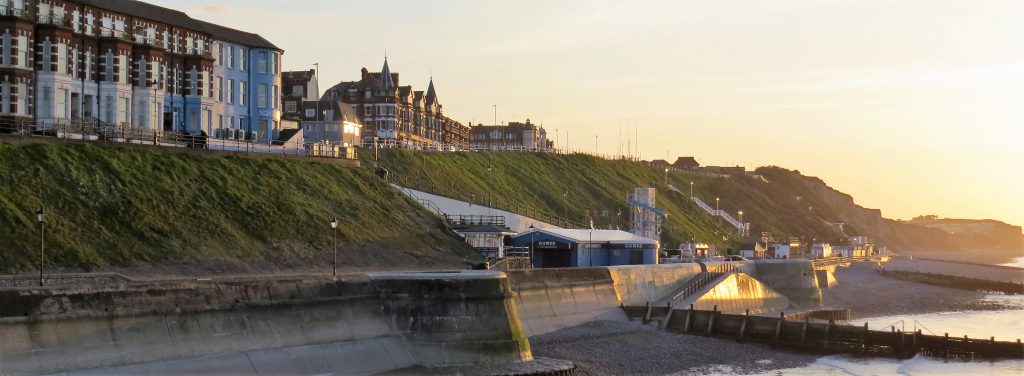
Residents of homes along the sandy cliffs of Hemby, on the Norfolk coast, are no strangers to coastal erosion. Indeed, their homes have been tumbling down the sandy cliffs for years, and many remain at high risk.
The road known as The Marrams has been victim to the effects of coastal erosion from strong winds and high tides, and vacant plots where homes once stood now outnumber the few remaining buildings.
Lance Martin’s timber framed property was perched on the edge of the cliff with just three feet between the building and the cliff edge. However, faced the prospect of his new clifftop house being demolished, a fate that has befallen twelve neighbouring properties since March, Mr Martin decided to take matters into his own hands.
Incredibly, the bungalow was dragged back by tractor, leaving ten metres of yard to the cliff edge.
Buying property along the coastline in Norfolk comes with a major health warning, but relocating a property by moving the entire building has been done many times before, both by disassembling and reassembling elsewhere – or simply raising it up and moving it on temporary rails, or the back of a flatbed vehicle.
With a little regard for overhead wires, low bridges and the removal of protruding chimneys, buildings can be moved for many reasons. Among them:
Cardiff’s historic Norwegian Church was dismantled to save it from the new Atlantic Wharf development in the 1980s. The little building was originally constructed in 1868 and was built to serve the Norwegian merchant fleet in Cardiff Docks’ heyday. It was rebuilt in its current location and is now a thriving cafe, gallery and arts building.
London’s Marble Arch was originally built as the entrance to Buckingham Palace in 1833. It was moved to its new location in 1851, and its traffic island position was created when Park Lane was widened in the 1960s.
The Belle Tout lighthouse was built in 1832 near the edge of the cliff at Beachy Head, East Sussex. In 1986, the building was used in the making of TV’s Life and Loves of a She-Devil. Due to cliff erosion, in 1999 the building was moved 56ft inland, pushed by four hydraulic jacks along steel and concrete beams to a site that was designed to allow for possible future relocations.
If you’re thinking of moving house in Hemsby, Cardiff, London, East Sussex or anywhere else in England and Wales – ask a PropertySurveying RICS Chartered Surveyor to provide you with independent, professional property advice.
SH/LCB

